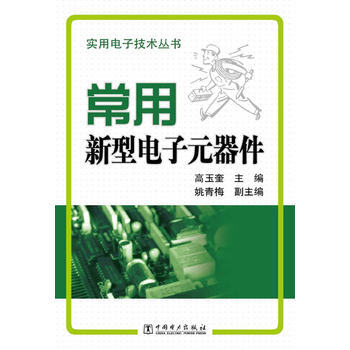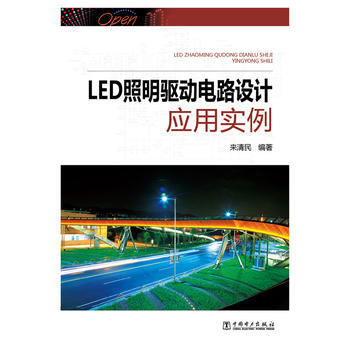

具体描述
基本信息
书名:数字信号处理(第二版)(英文版)
:38.00元
售价:25.8元,便宜12.2元,折扣67
作者:(美)莱昂斯 ,张建华,许晓东,孙松林 改编
出版社:电子工业出版社
出版日期:2010-07-01
ISBN:9787121111259
字数:
页码:
版次:1
装帧:平装
开本:16开
商品重量:0.400kg
编辑推荐
内容提要
本书在Richard G.Lyons所著Understanding Digital Signal Processing,Second Edition的基础上进行了改编,针对通信类学校本科教学大纲,删除了教学中一般不涉及的内容,调整了章节顺序,并增加了z反变换、滤波器结构、线性相位FIR滤波器和其结构、模拟滤波器简介的内容,使教内容材更加完整。全书在概述了离散序列和系统的定义和实例之后,详细讨论了离散系统的特性、信号的离散化和离散卷积、z变换、离散时间傅里叶变换和离散傅里叶变换、快速傅里叶变换、数字滤波器结构、以及有限和无限脉冲响应数字滤波器的设计等基本概念和基本理论。书中涉及的数学知识以简明形式给出,深入浅出,易于理解。本书每章都增加了例题、习题和MATLAB例题,以便加强对每章内容的理解和掌握。
本书可作为理工类大专院校电子、计算机、通信等专业的本科生双语教学教材,对于DSP领域的工程技术人员也有很好的参考价值。
目录
Chapter 1 Discrete Sequences and Systems 1
1.1 Discrete Sequences and Their Notation 1
1.1.1 Discrete-time Signals 2
1.1.2 Frequently Used Discrete Sequences 7
1.2 Signal Amplitude, Magnitude, Power 9
1.3 Signal Processing Operational Symbols 10
1.4 Introduction to Discrete Linear Time-Invariant Systems 12
1.5 Discrete Linear Systems 12
1.5.1 Example of a Linear System 12
1.5.2 Example of a Nonlinear System 14
1.6 Time-Invariant Systems 16
1.6.1 Example of a Time-Invariant System 16
1.7 The Commutative Property of Linear Time-Invariant Systems 17
1.8 The Causality Property of Linear Time-Invariant Systems 18
1.9 The Stability Property of Linear Time-Invariant Systems 18
1.10 Analyzing Linear Time-Invariant Systems 19
1.11 Problems 20
1.12 MATLAB Applications 22
1.12.1 Applications 22
1.12.2 Examples 23
1.12.3 Exercises 24
Chapter 2 Periodic Sampling 25
2.1 Aliasing: Signal Ambiguity in the Frequency Domain 25
2.2 Sampling Low-Pass Signals 29
2.3 A Generic Description of Discrete Convolution 32
2.3.1 Discrete Convolution in the Time Domain 33
2.3.2 The Convolution Theorem 36
2.3.3 Applying the Convolution Theorem 39
2.4 Problems 42
2.5 Matlab Applications 43
2.5.1 Applications 43
2.5.2 Examples 44
2.5.3 Exercises 46
Chapter 3 Z-Transform 47
3.1 The z-Transform 47
3.1.1 Poles and Zeros on the z-Plane and Stability 49
3.1.2 The ROC of z-Transform 50
3.1.3 The Properties of z-Transform 53
3.2 The Inverse z-Transform 55
3.2.1 General Expression of Inverse z-Transform 55
3.2.2 Inverse z-Transform by Partial-Fraction Expansion 58
3.3 Problems 61
3.4 MATLAB Applications 63
3.4.1 Applications 63
3.4.2 Examples 64
3.4.3 Exercises 67
Chapter 4 The Discrete Fourier Transform 68
4.1 Interpreting the DFT 69
4.2 Understanding the DFT Equation 71
4.2.1 DFT Example 1 74
4.3 DFT Properties 81
4.3.1 DFT Symmetry 81
4.3.2 DFT Linearity 83
4.3.3 DFT Magnitudes 83
4.3.4 DFT Frequency Axis 84
4.3.5 DFT Shifting Theorem 85
4.4 Inverse DFT 87
4.5 DFT Leakage 88
4.6 Windows 94
4.7 DFT Resolution, Zero Padding, and Frequency-Domain Sampling 101
4.8 Frequency Response 104
4.9 Problems 106
4.10 Matlab Applications 107
4.10.1 Applications 107
4.10.2 Examples 108
4.10.3 Exercises 111
Chapter 5 The Fast Fourier Transform 112
5.1 Relationship of the FFT to the DFT 112
5.2 FFT Alogrithm 113
5.3 Derivation of the Radix-2 FFT Algorithm 114
5.4 FFT Input/Output Data Index Bit Reversal 120
5.5 Radix-2 FFT Butterfly Structures 121
5.6 Efficiently Performing the FFT of Real Sequences 127
5.6.1 Performing Two N-Point Real FFTs 127
5.6.2 Performing a 2N-Point Real FFT 133
5.7 Discrete Convolution using FFT 137
5.7.1 Overlap-added 138
5.7.2 Overlap-saved 138
5.8 IFFT Algorithm 140
5.9 Problems 143
5.10 Matlab Applications 144
5.10.1 Applications 144
5.10.2 Examples 144
5.10.3 Exercises 146
Chapter 6 Filter Structure 147
6.1 Block Structure 147
6.2 Mason and Transpose Theorem 149
6.2.1 Mason s Rule 149
6.2.2 Transpose Theorem 150
6.3 Example of Filter Structures 151
6.3.1 IIR Filter Structure 151
6.3.2 FIR Direct Structure 158
6.3.3 FIR Cascade Structure 158
6.4 Problems 159
6.5 Matlab Applications 162
6.5.1 Applications 162
6.5.2 Examples 163
6.5.3 Exercises 167
Chapter 7 Finite Impulse Response Filters 168
7.1 An Introduction to Finite Impulse Response (FIR) Filters 169
7.2 Properties of FIR Filters 172
7.2.1 Convolution in FIR Filters 172
7.2.2 Linear phase FIR Filter 181
7.2.3 Linear Phase FIR Filter Structure 188
7.2.4 FIR Filter Poles and Zeros 194
7.3 Low-Pass FIR Filter Design 196
7.3.1 Window Design Method 197
7.3.2 Windows Used in FIR Filter Design 204
7.3.3 Examples to Design Linear Phase Low-Pass FIR Filter 210
7.4 Examples to Design Other Types Linear Phase FIR Filter 215
7.5 Problems 220
7.6 Matlab Exercises 223
7.6.1 Applications 223
7.6.2 Examples 223
7.6.3 Exercises 224
Chapter 8 Infinite Impulse Response Filters 226
8.1 An Introduction to Infinite Impulse Response Filters 227
8.2 The Laplace Transform 229
8.2.1 Poles and Zeros on the s-Plane and Stability 234
8.3 Analog Low-Pass Filters 239
8.3.1 Introduction 240
8.3.2 Approximation of analog filter characteristics 240
8.3.3 Butterworth Approximation 242
8.3.4 Chebyshev Approximation 247
8.4 Impulse Invariance IIR Filter Design Method 253
8.4.1 Impulse Invariance Design Method 1 Example 258
8.4.2 Impulse Invariance Design Method 2 Example 260
8.5 Bilinear Transform IIR Filter Design Method 266
8.5.1 Bilinear Transform Design Example 271
8.6 Low-Pass IIR Filter Design 274
8.6.1 Example of Low-Pass IIR Digital Filter Design 274
8.6.2 a Brief Comparison of IIR and FIR Filters 277
8.7 Other Types IIR Filter Design 278
8.8 Problems 284
8.9 Matlab Exercises 286
8.9.1 Functions of IIR Design 286
8.9.2 Examples 287
8.9.3 Exercises 288
作者介绍
张建华 女,博士,北京邮电大学岗位特聘教授。2002年被选送到德国汉堡—哈堡科技大学深造半年,从2005年开始从事数字信号处理课程的双语教学工作,2008年受国家留学基金委支持前往韩国访问学习半年。先后主持和参加了10余个国家自然科学基金、国家863计划重点项目、国家科技
文摘
序言
用户评价
当我真正开始深入阅读时,我立刻被作者那行云流水的叙述方式所吸引。他似乎有一种魔力,能将那些原本晦涩难懂、充满复杂数学符号的概念,用一种异常直观和富有逻辑性的方式娓娓道来。比如在讲解傅里叶变换那一章时,他没有直接抛出冗长的积分公式,而是先从一个实际生活中的声波例子入手,层层递进地揭示了其背后的物理意义和数学本质。这种“从现象到本质”的教学方法,极大地降低了初学者的入门门槛。我清晰地记得,有几个困扰我很久的信号处理的“死角”,在这本书里被彻底打通了,那种豁然开朗的感觉,是其他教材无法给予的。作者在关键步骤的推导过程中,总会适当地加入一些旁注,解释为什么选择这种推导路径,而不是其他更复杂的,这种对读者思维过程的体贴,让人感觉像是有位经验丰富的导师在身边耐心指导。这种循序渐进,步步为营的写作风格,让我在不知不觉中就掌握了复杂的理论框架。
评分这本书的封面设计简约而不失专业感,那种略带磨砂质感的纸张摸上去手感极佳,让人一拿到手里就感觉物有所值。我特别喜欢它排版上的留白处理,使得即便是篇幅很厚的专业书籍,阅读起来也不会感到拥挤和压抑。初翻阅时,章节标题和重要术语的字体选择非常考究,既保证了清晰度,又透露出一种严谨的学术气息。装帧工艺也相当扎实,书脊的处理使得完全平摊阅读成为可能,这对于需要对照公式和图表的理工科学习者来说,简直是一个福音。我记得有一次在图书馆里,光是看着它摆在书架上的样子,就觉得它散发着一种厚重的知识分量,和那些花里胡哨的畅销书完全不是一个量级。它散发出的那种可靠感,让人忍不住想要立刻沉浸进去,探索它所蕴含的知识体系。这本书的印刷质量也值得称赞,油墨均匀,黑白对比度适中,即便是长时间阅读,眼睛的疲劳感也比看一些低质量印刷品要轻得多。这种对细节的极致追求,无疑体现了出版方对知识传播的尊重。
评分这本书的配图和图表质量,绝对是业内顶尖水准。很多关键的信号处理流程、系统框图,以及频谱分析的对比图,都绘制得极其清晰、精准,线条流畅,标签明确。我发现,很多教科书中的图表往往为了省墨或排版而显得模糊不清,但这本则完全没有这个问题。尤其是那些表示时间域和频率域相互变换的动态示意图(虽然是静态印刷品,但其设计感让人能联想到动态过程),它们成功地将抽象的数学概念具象化了。例如,在解释采样定理时,作者用多组不同频率的采样点与原信号重叠的图像,直观地展示了混叠现象的发生机制,使得“奈奎斯特频率”这个概念不再是书面上的一个数字,而是一个可以被“看见”的物理现象。这种对视觉辅助的重视,对于理解复杂的信号系统至关重要,它极大地减少了阅读障碍,提高了学习效率。
评分从我个人的学习经历来看,这本教材最大的价值在于其内容的广度和深度达到了一个极佳的平衡点。它既没有为了追求面面俱到而流于表面,也没有为了强调深度而变成只有少数专家才能企及的深奥文献。它非常巧妙地覆盖了数字信号处理领域的核心骨干——从离散时间信号与系统、Z变换、傅里叶分析,到数字滤波器设计(FIR/IIR),再到快速算法和有限字长效应等关键模块。每一个模块的介绍都恰到好处,既保证了理论的严谨性,又为后续更深入的研究(比如自适应滤波、小波分析等)打下了坚实的基础。我常常发现,当我阅读其他进阶书籍时,遇到需要回顾基础概念时,翻回这本书,总能找到最清晰、最权威的解释。可以说,它不仅仅是一本教材,更像是一部可以长期依赖的、不断翻阅的工具书,其参考价值会随着我专业水平的提高而愈发凸显。
评分这本书的习题设计,简直是教科书级别的典范。它们不是那种单纯为了测试记忆力的重复性练习,而是真正考验读者对理论的理解和灵活应用能力的“试金石”。我尤其欣赏它将理论与实际工程问题紧密结合的特点。很多题目会设定一个具体的应用场景,比如数字滤波器设计中的特定性能指标,或者快速傅里叶变换(FFT)在频谱分析中的效率问题,然后要求读者运用所学知识去求解或优化。这种设计极大地激发了我动手实践的欲望。我记得我曾经花了一个周末的时间,专门去攻克其中一个关于“窗函数选择”的综合题,通过自己编写小程序来验证不同窗函数对频谱泄漏的影响,那种通过代码验证理论的成就感,远超于简单地写出一个正确的数学答案。这些习题不仅巩固了知识,更重要的是培养了一种解决实际工程挑战的思维模式,让我对这门学科的实用价值有了更深的认识。
相关图书
本站所有内容均为互联网搜索引擎提供的公开搜索信息,本站不存储任何数据与内容,任何内容与数据均与本站无关,如有需要请联系相关搜索引擎包括但不限于百度,google,bing,sogou 等
© 2026 book.coffeedeals.club All Rights Reserved. 静流书站 版权所有




















